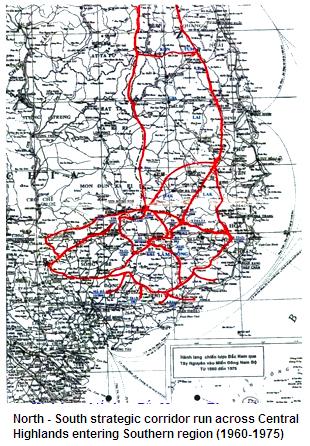
Historic relic and communication locations extend Ho Chi Minh road, the section from South Central Highlands to South-eastern region belongs to the boundary of two communes: Dak Nia (Gia Nghia town) and Nam Binh ( Dak Song district). This is the official marked location to extend Ho Chi Minh road from North to South, contribute greatly to the victory of anti-American resistance war and national reunification.
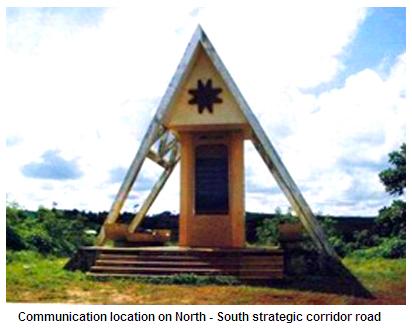 |
To grasp thoroughly the Resolution 15 of Party Central Executive Committee, extending strategic corridor road of North - South was set out as one of the urgent tasks to aim at strengthening officers, soldiers and weapon to support for the south revolution, especially southern region.
On May 15th 1959, Party Central and president Ho Chi Minh decided to establish the North - South strategic transport group (Group 559). At the same time, the route by land on Truong Son mountain chain was urgently extended. However, Truong Son road just extended from North latitude 17 to North Central Highlands. The remaining section from South Central Highlands to South-eastern region was still being separated. The U.S - Puppet government considered the route as a inviolate land. For the support of the North was extended to the sourthern battlefield and the South Central pole (codenamed B2), extending the route was an urgent requirement. Former Party General Secretary Le Duan once said that: " It was very urgent for extending the corridor route, if we wanted to defeat the U.S" .
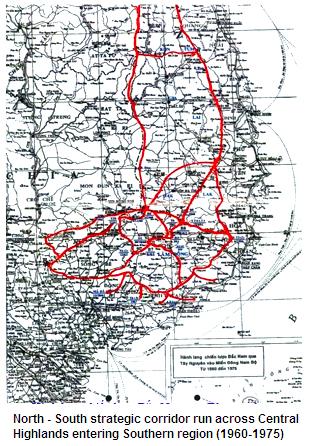 |
Hence, following the policy of Party, on May 25th 1959, Ministry of National Defence and Central Unification Board held special armed group, alias B90, including 25 soldiers who had ever operated and fought on the battlefields in South-eastern region, South Central Highlands, Northeast Cambodia. B90 group was led by comrade Tran Quang Sang, vice-group comrades Phung Dinh Am and Pham Van Lac. The group secretly returned to the Southern battlefield collaborating with Dak Lak Party Committee to build revolutionary base, remove the white zone of the enemy, clear the end of Truong Son Road and the strategic corridor route from South Central Highlands to South-eastern region. After nearly a year of hardship, officers and soldiers tried to overcome all obstacles on the new battlefield; there was no revolutionary base, they had to live in harsh circumstances. However, they still persevered in holding on to each village, building revolutionary bases, gradually extending the battlefield and clearing the way forward Southern Vietnam.
Meanwhile, combinating with the task of clearing the way in South Central Highlands, in the middle of 1960, Southern Region Committee and Southeastern Region Committee established the propaganda armed team (Alias C200) whose tasks were to clear the way and link up with B90 group which was on duty in the South of Quang Duc province. On October 30th 1960, B90 group, in the East side, linked up with C200 group near Dak R'Tih river bank in Quand Duc province (Dak Nong nowadays).
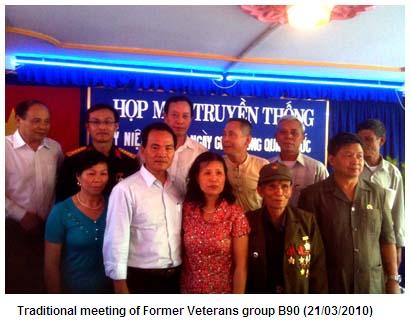 |
On November 4th 1960, at 20 o'clock PM, B90 group, in the West side, continued to link up with the armed group in Phuoc Long province (group C271) at the foot of tree cylinder no.4, the road no.14 (the section from Dak Song entered Gia Nghia; nowadays, it belongs to hamlet 8, Nam Binh commune, Dak Dong district, Dak Nong province). After this event, Ho Chi Minh route, the section South Central Highlands to South-eastern region was extended, stopped the battlefield period to be separated, connected the South Central Highlands with South-eastern region, opened up a vast zone becoming resistance base, contributed to taking Vietnam revolution in general, South Central and South Central Pole in particular turning to new stage. Through this route, tens of thousands of young people in Southern and South Central Pole returned to the battlefield; Besides, North Vietnam supported tens of thousands of officers and soldiers, tens of thousands of tons of weapons, material, food for the battlefield B2; with the support of North Vietnam, the Viet Cong forces and North Vietnam military defeated the U.S - Puppet govenement, liberated the South and reunified the country.
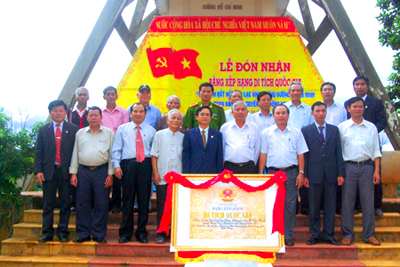 |
With the historical significance, on August 02nd 2011, the Ministry of Culture, Sports and Tourism announced the decision no. 2367/QD - BNHTT & DL ranking national monument for historic relic and communication locations extending Ho Chi Minh road, the section South Central Highlands to South - eastern region (belonging to Dak Nia commune, Gia Nghia town and Nam Binh commune, Dak Song district, Dak Nong province).